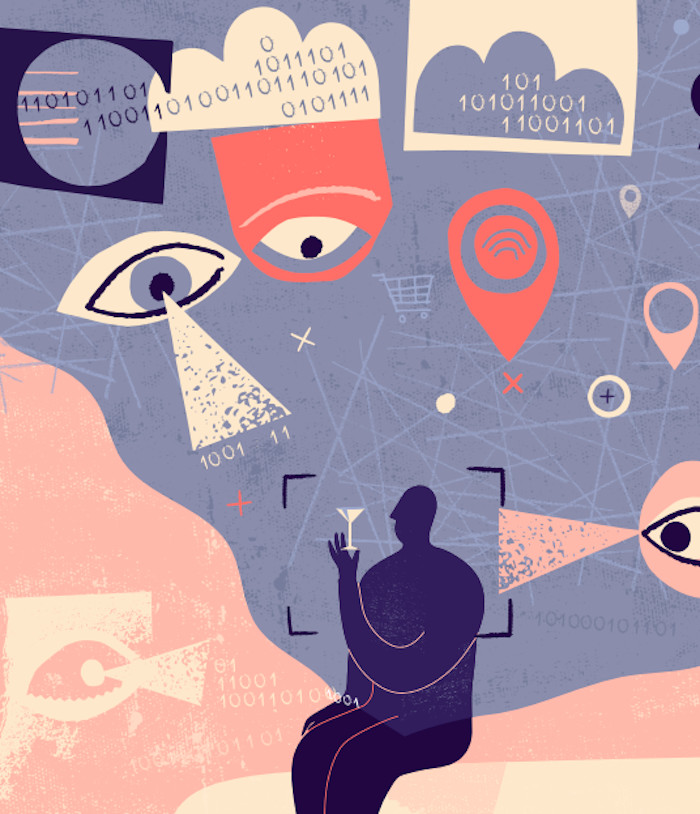
Edmund Weil outlines some of the many ways in which data can provide invaluable insights into guest trends without being intrusive to their experience
Welcome to the wonderful world of data. The digital world we inhabit is wreathed in a constant buzzing feedback loop of information. Every site or app we visit online takes away a little piece of us – a piece that can be analysed or packaged and sold to other entities. Unlike some, I tend to feel relaxed about this feature of our era. If I’m going to be exposed to advertisements wherever I go, I’d rather they were more relevant to my needs than less.
That said, I’d always thought of hospitality as a sort of exclusion zone to this trend. A pint in the pub, or a great meal at a restaurant should be unconstrained by the chains of noughts and ones that encircle so many other aspects of our lives. I’ve always felt irked when the mid-market chain restaurant at which I’ve just enjoyed a delicious bowl of ramen presents me with a purpose-built digital tablet alongside the bill to deconstruct and rate the various facets of my enjoyment.
Most independent bar owners likely share my sentiment. It’s certainly been my feeling for most of my journey as a bar owner: in the end, you stand or fall on your product – then drinks, the staff , the vibes. Yet truthfully, even for those of us who owner-operate one small outlet, data is ever-present in our decision-making.
Reflecting on the pitch deck for Nightjar back in 2009, detailed audience segmentation information was already crucial. Now, with several bars under my belt, the importance of understanding our clientele is even more apparent. For instance, comparing Nightjar locations in Shoreditch and Carnaby reveals variations in sales, spending per head and overall guest experience, despite offering similar products and service standards. The same holds true for Swift Soho and Swift Borough. Recognising the demographics, preferences, spending habits and expectations of our guests significantly impacts the success of each establishment.
So, how do we tap into available data to gain actionable insights without intruding on our guests’ experiences? While I’m not keen on deploying digital survey tablets, there’s a wealth of valuable information at our fingertips.
First off, there are numerous freely available surveys on the nation’s drinking habits. These offer insights into beverage preferences and consumption patterns across different age groups. Also, speak to your brand reps as big drinks companies often conduct detailed surveys, research and big data analysis that may well prove relevant to your specific niche and help inform menu development and marketing strategies. To share a few examples I gleaned from a recent report shared with me by a big drinks company:
• The number of cocktail outlets in the UK has dropped since Covid
• Guests are drinking fewer cocktails earlier in the day (a reflection of the drop-off in after-works drinks)
• Cocktails are increasingly moving from a habitual drinking visit to a treat or a special occasion
• Three in five consumers check online to see how their cocktail looks prior to ordering, indicating the importance of a strong online presence for brands and operators. As interesting and potentially useful as the above might be, it pales into insignificance against collecting and analysing the data produced by your own bar or bars.
Social media analysis
Almost all bars work hard to build a social media following and use it as a key marketing channel to showcase drinks and promote events and activations. However, it also provides an almost bottomless reserve of information on your clientele. A deep dive into Instagram insights can show you the gender, age and geographical segmentations of your following. Using the various ad managers that come with these platforms allows you to slice and dice your audience for specific campaigns as well as reach huge ‘lookalike’ audiences with similar interests and habits. Be warned though – this is a rabbit hole.
Sales data
This is probably the easiest to gather and analyse, as almost all EPOS systems can generate a range of reports. Not just your best and worst-selling cocktails, but the spirits in them. For example, Swift Shoreditch is more white spirit-focused than Soho, with a particular emphasis on agave. This has allowed us to shape the menu divergence of each venue to better suit our clientele, ultimately providing better sales and guest experience.
Customer data
There are various non-intrusive ways of gathering customer data. Reviews provide some excellent qualitative data and, if studied frequently, can really help to identify trends (both positive and negative) in the guest experience. A good bookings system will also provide an avenue for collecting information on individual guests. Notes and labels applied by your front-of-house staff can help build up a good picture of your regulars that propagates across teams and venues and can be acted upon to provide a personal touch as well the perfect upsell opportunity.
Customer relationship management
Everyone knows a strong newsletter list is a key to marketing your bar and getting bums on seats – but how can we go beyond just a bunch of email addresses? The Holy Grail of data is a CRM system that can share data with both your EPOS and bookings platforms. Imagine a system where you can combine the spending and drinking habits of both individuals and groups of guests and use it to send out tailored invites and offers to people you know will be interested. Upcoming single malt masterclass? Let’s first send an invite to the guests who’ve ordered a Scotch on every previous visit. We’ve been working towards this for several years now. It’s neither simple nor cheap and requires a close and co-operative relationship with and between EPOS, bookings and CRM platforms. However, in today’s environment of increased competition over smaller disposable incomes, it’s a quest worth pursuing.


